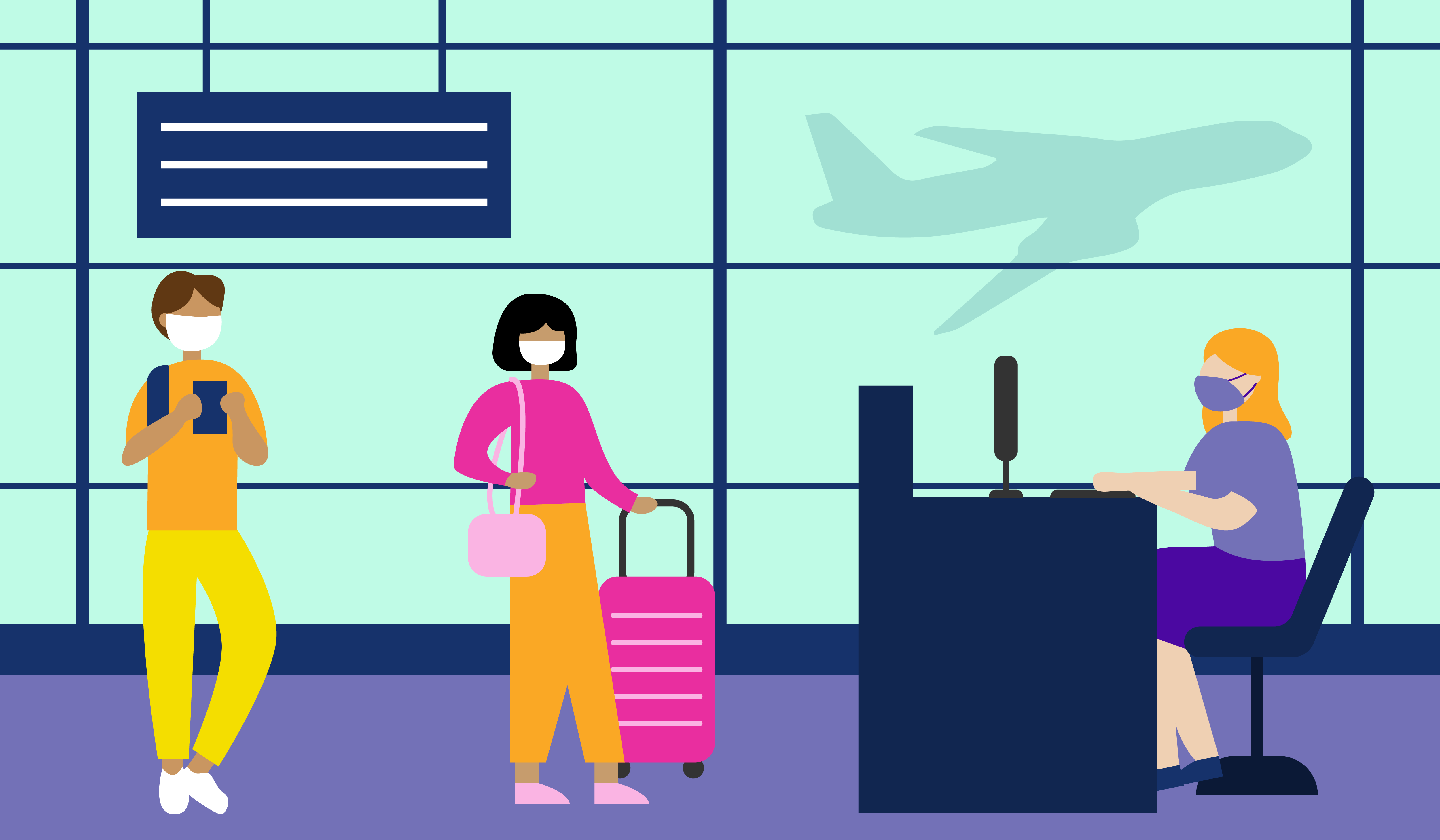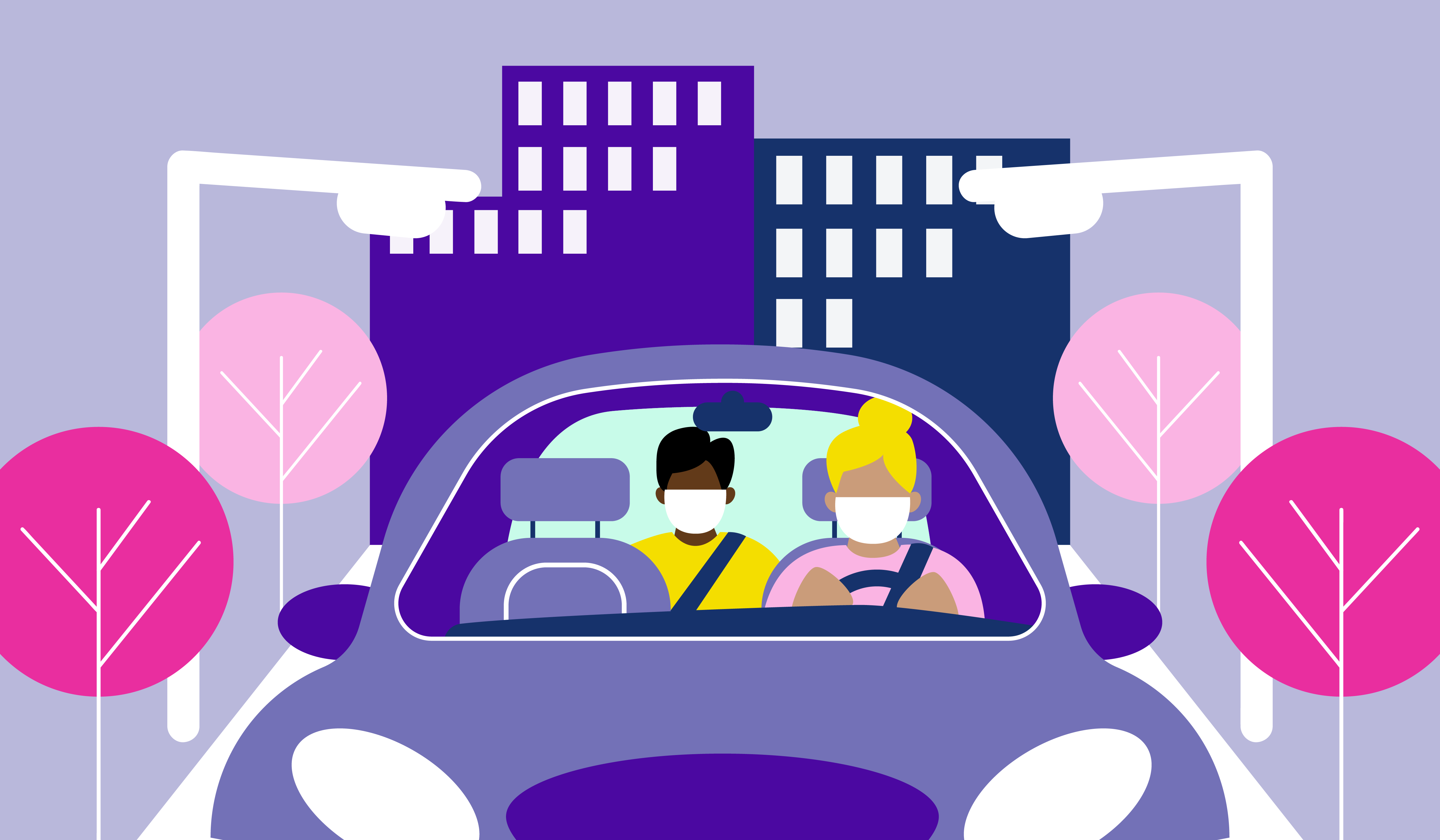
Get up to date with your COVID-19 vaccines before you travel – CDC
We get it: the COVID-19 pandemic has impacted every part of our lives, especially how we travel. It’s changed the everyday bus ride to East Lake to how we moved into our res halls and apartments this semester. As college students, it’s nearly impossible to avoid traveling or using public transportation.
During the pandemic, the safest way for someone to travel is by private transport. However, that’s not the most accessible option and many rely on other forms of travel. Whether that’s driving, flying, or riding–each method of transportation has varying risks.
Do Not Travel
During any point of your journey, remember to stay home when appropriate. If you are sick or have recently had close contact with a confirmed case, please stay home and avoid using public transport. Trains and airlines may be able to offer you a waiver, call to see what’s possible.
Before You Go
Before any big trip or move, consider laying low before you go to avoid bringing any germs into your new environment.
Investigate your current location and destinations COVID-19 case numbers. Some communities have travel bans or restrictions in place. If you are planning on flying, airlines may also have special requests such as getting a negative COVID-19 test prior to traveling or showing proof of vaccination.
If you are going somewhere in the United States use the CDC’s Travel Planner to look at guidelines and restrictions for your destination. If you are traveling outside of the United States, monitor the CDC’s Travel Health Notices for risk level assessment updates for destinations around the world.
Testing
Consider getting tested with a viral test as close to the time of departure as possible (no more than 3 days) before travel, regardless of vaccination status.
During Travel
While traveling, follow CDC’s safety recommendations of wearing a high-quality mask while using public transportation.
After Travel
Get tested with a viral test if your travel involved situations with greater risk of exposure such as being in crowded places while not wearing a high-quality mask, regardless of vaccination status.
If you traveled internationally, get tested with a viral test 3-5 days after returning to the United States, regardless of vaccination status.
Monitor yourself for COVID-19 symptoms.
If you test positive for COVID-19, fill out the self-report and start isolating. If you have COVID-19 questions, contact Ask-A-Nurse.

When Carpooling or Driving Privately
For the everyday driving it’s strongly encouraged to drive alone or with other members of your household.
As a college student, there will be several occasions where you may be traveling with others. It might be to get coffee with your bestie or to drive a friend home for break.
You may also find yourself in the situation where you may be needing to relocate for isolation or quarantine. If you are traveling with someone who has COVID-19, take extra safety precautions.
-
- Limit the number of people in your vehicle. If you are moving to or from campus, you may want to limit your moving crew.
- Disinfect frequently touched surface areas such as your seat, seat belt and door handles before the ride begins.
- Handle all your personal belongings yourself. Keep COVID care items nearby such as your mask, hand sanitizer and disinfectant wipes.
- Wash or sanitize hands frequently throughout the trip.
- Keep windows open or keep the air on in the vehicle when possible. Avoid using air recirculation mode if possible.
- Consider wearing a face mask. Avoid touching your face with unwashed hands and cover your mouth and nose with a tissue or sleeve (not your hands) when sneezing or coughing–sanitizing hands immediately after.
- Physically distance yourself from others in the vehicle the best as you can. If there’s only two people in the vehicle, it’s best to have the passenger sit in the backseat-diagonally behind the driver.
- Stay in the vehicle until you have reached your final destination. Try your best to make it home without any stops. Bring water, food and other beverages with you to help limit stops on longer rides.
- Disinfect your car with an aerosol disinfectant spray once you have reached your destination.
When Ride Sharing or Riding the Bus
Ride sharing or riding a bus has increased risks due to the increased amounts of human traffic that use these services.
If you’re using a rideshare service such as Uber or Lyft, ask the driver for the name of the reserved passenger before entering the vehicle. Verify that it is the correct car and license plate with the app.
-
- Keep a safe physical distance from others who are not in your household. Follow signage guidelines at the bus stop and on the rideshare application.
- It is recommended to wear a mask. Some forms of public transport may have masking requirements.
- Avoid touching your face with unwashed hands and cover your mouth and nose with a tissue or sleeve (not your hands) when sneezing or coughing–sanitizing hands immediately after.
- Wash or sanitize hands frequently throughout the trip.
- If possible, wipe down your seat, seatbelt, door handles, and other frequently touched surfaces before the ride begins.
- Handle all your personal belongings yourself. Keep COVID care items nearby such as your mask and hand sanitizer.
- Physically distance yourself from others in the vehicle the best as you can. If there’s only two people in the vehicle, it’s best to have the passenger sit in the backseat-diagonally behind the driver.
- Keep windows open or the air on in the vehicle when possible.
- Avoid contact with those exhibiting symptoms of COVID-19 around you, distance yourself as much as possible.
- If you think your safety is being compromised in any way, you can ask your rideshare driver to stop the car and order another ride or hop off the bus at the next stop and get on another bus.
When Riding a Plane or Train
For some students, traveling by plane is the only option for them to see their families who live hundreds of miles away.
Air and train travel poses a higher risk compared to other forms of transportation due to being enclosed spaces for extended periods of time and spending time in lines and terminals which bring you into close contact with frequently touched surfaces. Keep these tips in mind before hopping on your next flight.
-
- If possible, reserve seats for your household next to each other.
- Keep a safe physical distance from others who are not in your household. Follow signage guidelines in the train station and airport.
- It is recommended to wear a mask. Some flights and airports may have masking requirements.
- Avoid touching your face with unwashed hands and cover your mouth and nose with a tissue or sleeve (not your hands) when sneezing or coughing–sanitizing hands immediately after.
- Wash or sanitize hands frequently throughout the trip and in high traffic areas such as checking in, going through baggage, and waiting for your flight or train.
- Handle all your personal belongings yourself. Keep COVID care items nearby such as your mask, hand sanitizer, disinfectant wipes, and any pre-packaged food or beverages.
- Use saline nasal spray before and after the flight. Because the air on the plane is dry and dries out your mucus membranes, your resistance to infection is reduced. Keeping these membranes moist with saline spray may help.
- Wipe down armrests and your tray table with sanitary wipes. Avoid touching the handle of the bathroom doors if possible.
- Keep air vents above your seat open during your flight to improve ventilation, ideally pointing them away from your face.
- If possible, stay seated and don’t get up until your flight is over.
Upon Your Arrival
Regardless of vaccination status, delay traveling if you are ill or exposed, lay low before and after any trip, and self-monitor for symptoms after traveling. If you develop symptoms of COVID-19 from a trip, self-isolate, and call the Ask-A-Nurse Message Line to know what to do next.
If you test positive to COVID-19 during any point of the year (including breaks) please self-report.